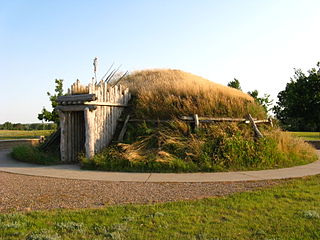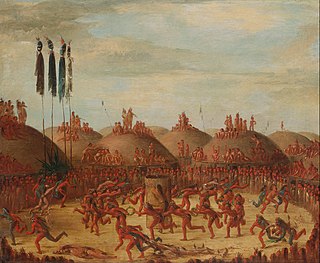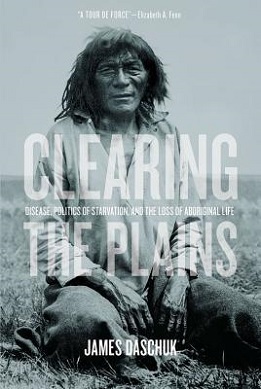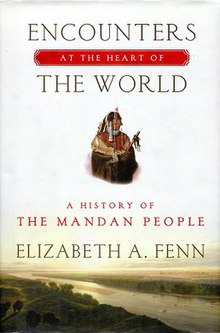
The Pulitzer Prize for History, administered by Columbia University, is one of the seven American Pulitzer Prizes that are annually awarded for Letters, Drama, and Music. It has been presented since 1917 for a distinguished book about the history of the United States. Thus it is one of the original Pulitzers, for the program was inaugurated in 1917 with seven prizes, four of which were awarded that year. The Pulitzer Prize program has also recognized some historical work with its Biography prize, from 1917, and its General Non-Fiction prize, from 1962.

Guns, Germs, and Steel: The Fates of Human Societies is a 1997 transdisciplinary non-fiction book by the American author Jared Diamond. The book attempts to explain why Eurasian and North African civilizations have survived and conquered others, while arguing against the idea that Eurasian hegemony is due to any form of Eurasian intellectual, moral, or inherent genetic superiority. Diamond argues that the gaps in power and technology between human societies originate primarily in environmental differences, which are amplified by various positive feedback loops. When cultural or genetic differences have favored Eurasians, he asserts that these advantages occurred because of the influence of geography on societies and cultures and were not inherent in the Eurasian genomes.

The Hidatsa are a Siouan people. They are enrolled in the federally recognized Three Affiliated Tribes of the Fort Berthold Reservation in North Dakota. Their language is related to that of the Crow, and they are sometimes considered a parent tribe to the modern Crow in Montana.

The Arikara, also known as Sahnish, Arikaree, Ree, or Hundi, are a tribe of Native Americans in North Dakota. Today, they are enrolled with the Mandan and the Hidatsa as the federally recognized tribe known as the Mandan, Hidatsa, and Arikara Nation.

The Mandan are a Native American tribe of the Great Plains who have lived for centuries primarily in what is now North Dakota. They are enrolled in the Three Affiliated Tribes of the Fort Berthold Reservation. About half of the Mandan still reside in the area of the reservation; the rest reside around the United States and in Canada.
The first European contact in 1492 started an influx of communicable diseases into the Caribbean. Diseases originating in the Old World (Afro-Eurasia) came to the New World for the first time, resulting in demographic and sociopolitical changes due to the Columbian Exchange from the late 15th century onwards. The Indigenous peoples of the Americas had little immunity to the predominantly Old World diseases, resulting in significant loss of life and contributing to their enslavement and exploitation perpetrated by the European colonists. Waves of enslaved Africans were brought to replace the dwindling Indigenous populations, solidifying the position of disease in triangular trade.

Fort Abraham Lincoln State Park is a North Dakota state park located 7 miles (11 km) south of Mandan, North Dakota, United States. The park is home to the replica Mandan On-A-Slant Indian Village and reconstructed military buildings including the Custer House.

The Knife River Indian Villages National Historic Site, which was established in 1974, preserves the historic and archaeological remnants of bands of Hidatsa, Northern Plains Indians, in North Dakota. This area was a major trading and agricultural area. Three villages were known to occupy the Knife area. In general, these three villages are known as Hidatsa villages. Broken down, the individual villages are Awatixa Xi'e, Awatixa and Big Hidatsa village. Awatixa Xi'e is believed to be the oldest village of the three. The Big Hidatsa village was established around 1600.

The Hunkpapa are a Native American group, one of the seven council fires of the Lakota tribe. The name Húŋkpapȟa is a Lakota word, meaning "Head of the Circle". By tradition, the Húŋkpapȟa set up their lodges at the entryway to the circle of the Great Council when the Sioux met in convocation. They speak Lakȟóta, one of the three dialects of the Sioux language.
Carl Neumann Degler was an American historian and Pulitzer Prize-winning author. He was the Margaret Byrne Professor of American History Emeritus at Stanford University.
The 1837 Great Plains smallpox epidemic spanned 1836 through 1840, reaching its height after the spring of 1837, when an American Fur Company steamboat, the SS St. Peter, carried infected people and supplies up the Missouri River in the Midwestern United States. The disease spread rapidly to indigenous populations with no natural immunity, causing widespread illness and death across the Great Plains, especially in the Upper Missouri River watershed. More than 17,000 Indigenous people died along the Missouri River alone, with some bands becoming nearly extinct.
Peter Hutchins Wood is an American historian and author of Black Majority: Negroes in Colonial South Carolina from 1670 through the Stono Rebellion (1974). It is one of the most influential books on the history of the American South of the past 50 years. A former professor at Duke University in North Carolina, Dr. Wood is now an adjunct professor in the History Department at the University of Colorado Boulder, where his wife, Elizabeth A. Fenn is a professor emeritus in the History Department.
Hill & Wang is an American book publishing company focused on American history, world history, and politics. It is a division of Farrar, Straus and Giroux.
The history of smallpox extends into pre-history. Genetic evidence suggests that the smallpox virus emerged 3,000 to 4,000 years ago. Prior to that, similar ancestral viruses circulated, but possibly only in other mammals, and possibly with different symptoms. Only a few written reports dating from about 500 AD to 1000 AD are considered reliable historical descriptions of smallpox, so understanding of the disease prior to that has relied on genetics and archaeology. However, during the 2nd millennium AD, especially starting in the 16th century, reliable written reports become more common. The earliest physical evidence of smallpox is found in the Egyptian mummies of people who died some 3,000 years ago. Smallpox has had a major impact on world history, not least because indigenous populations of regions where smallpox was non-native, such as the Americas and Australia, were rapidly and greatly reduced by smallpox during periods of initial foreign contact, which helped pave the way for conquest and colonization. During the 18th century the disease killed an estimated 400,000 Europeans each year, including five reigning monarchs, and was responsible for a third of all blindness. Between 20 and 60% of all those infected—and over 80% of infected children—died from the disease.
Although a variety of infectious diseases existed in the Americas in pre-Columbian times, the limited size of the populations, smaller number of domesticated animals with zoonotic diseases, and limited interactions between those populations hampered the transmission of communicable diseases. One notable infectious disease that may be of American origin is syphilis. Aside from that, most of the major infectious diseases known today originated in the Old World. The American era of limited infectious disease ended with the arrival of Europeans in the Americas and the Columbian exchange of microorganisms, including those that cause human diseases. Afro-Eurasian infections and epidemics had major effects on Native American life in the colonial period and nineteenth century, especially.

Double Ditch, also known as the Double Ditch State Historic Site, Burgois Site, 32BL8, Bourgois Site, and Double Ditch Earth Lodge Village Site, is an archaeological site located on the east bank of the Missouri River north of Bismarck, North Dakota, United States. It is named for the two visible trenches that once served as fortifications for the village, but archaeologists found a further two ditches outside these indicating that the population was originally larger.

In epidemiology, a virgin soil epidemic is an epidemic in which populations that previously were in isolation from a pathogen are immunologically unprepared upon contact with the novel pathogen. Virgin soil epidemics have occurred with European settlement, particularly when European explorers and colonists took diseases to lands they settled in the Americas, Australia and Pacific Islands.

Elizabeth Anne Fenn is an American historian. Her book Encounters at the Heart of the World: A History of the Mandan People, won the 2015 Pulitzer Prize for History. She serves as the Walter S. and Lucienne Driskill chair in Western American History at University of Colorado-Boulder.

Mitutanka (Matootonah) was the lower Mandan village at the time of the Lewis and Clark Expedition. At the time that Lewis and Clark visited the main chief was Sheheke.

Clearing the Plains: Disease, Politics of Starvation, and the Loss of Aboriginal Life is a 2013 book by Canadian scholar James Daschuk. The book takes an epidemiological approach and documents the historical roots of modern health disparities between Canadians and Indigenous peoples living in what is now Canada. In doing so, Daschuk highlights in particular the role of Canadian policy designed to displace Indigenous populations from their traditional territories to make way for the settlement of the Prairies, including policies that amounted to forced starvation. The book implicates numerous government officials, including John A. Macdonald, Canada's first Prime Minister, in advocating for and designing such policies. Daschuk thus builds on the work of scholars such as Sarah Carter who have highlighted the shortcomings of Canadian Indigenous policies in the settlement period, along with scholarship on the social determinants of health. In an article about his research, Daschuk argued that these types of policies were part of a process of genocide and ethnic cleansing.















